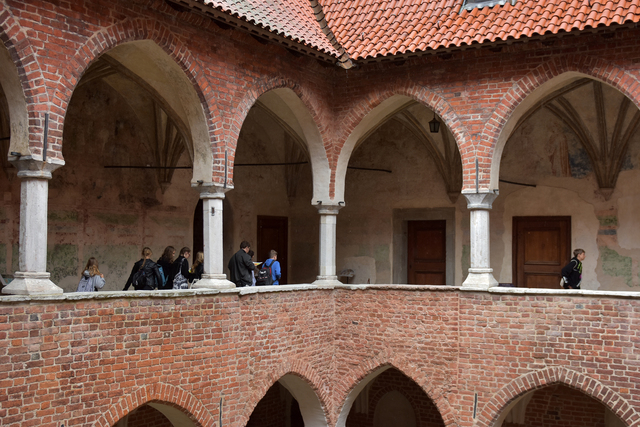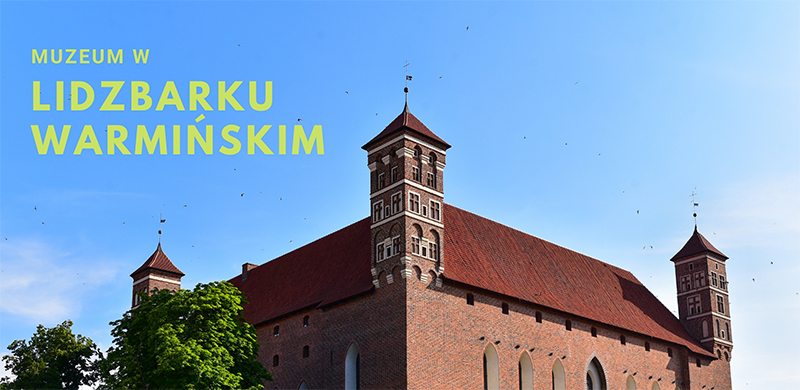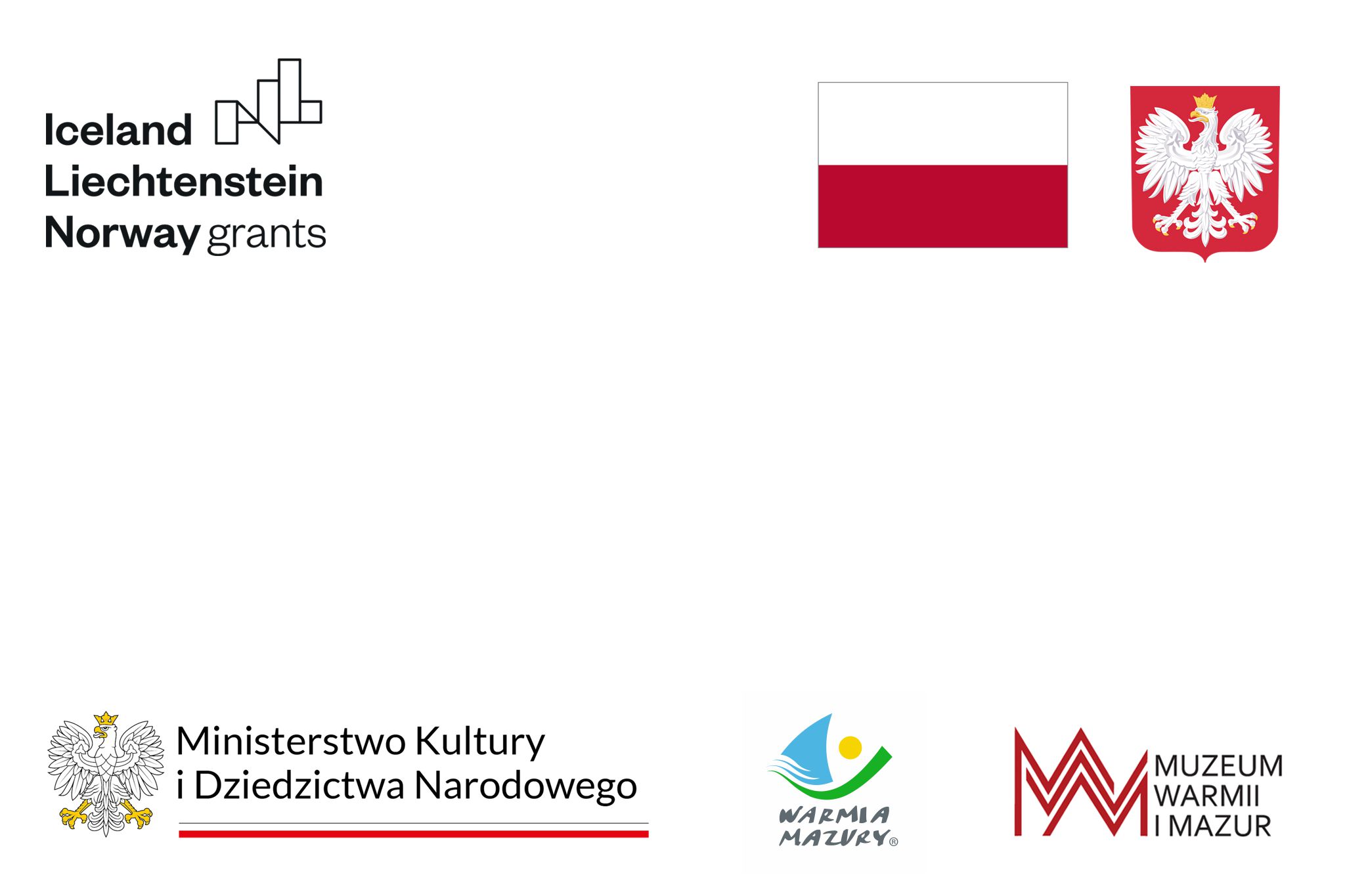Cloisters of Lidzbark castle from the end of the XIVth cent.
The project "Rescue conservation works of the cloisters of the Lidzbark castle" implemented in the years 2010 – 2011 contributed significantly to the broadening of knowledge about cloisters. Archaeological works, the aim of which was to search for a medieval well in the courtyard, brought confirmation of chronicle sources as to the water supply established already in the times of bishop Henry Sorbom (1373 -1401), who brought water to the castle with two threads. Made during the functioning of the orphanage in the nineteenth century, in the middle of the courtyard, a non-existent wooden well may have contributed to the removal of the earlier one.
The cloisters, dating back to 1380, have two floors. On the lower one they are rib vaulted, while on the first floor they are vaulted with three supports, and the arches of the arcades support octagonal pillars made of Gotland limestone, giving the impression of palace gothic architecture of the highest class.
In the lower part of the cloisters there are cannon barrels signed with the coat of arms of bishop Adam Stanisław Grabowski (1741 – 1746), the penultimate great inhabitant of the Lidzbark residence. The paintings discovered as part of the project adorned all the walls of the twenty bays of the first floor level of the cloisters, and their legibility is about 75%. These over six hundred years old religious paintings, created on the initiative of Henry Sorbom and made by Czech masters, enrich the castle with a scale unprecedented in this part of Europe. In front of the gate neck there is the patron saint of the residence, Saint Catherine with Saints Dorothy and Barbara. Other scenes are: Lamentation of Christ, Saint Agatha with Saints Agnes and Apolonia, Saint Anna Samotrzeć with Saint Elizabeth of Turin and Saint Mary Magdalene, Annunciation, Adoration of the Magi, Dormition of Mary, Coronation of Mary, Crucifixion, Scourging, Prayer in Gethsemane, Twelve-year-old Jesus in the temple, Crucifixion scene, Last Judgment – saved, Last Judgment – hell, Crowning with thorns. In the east wing of the cloisters, the gothic portals and the later foundation of bishop Szymon Rudnicki and two foundations of cardinal Michał Radziejowski (1679 – 1689) deserve attention. In the southern wing, under the main roof, on the face of the wall, there is a sundial founded by bishop Adam Stanisław Grabowski from 1746.
The cloisters, dating back to 1380, have two floors. On the lower one they are rib vaulted, while on the first floor they are vaulted with three supports, and the arches of the arcades support octagonal pillars made of Gotland limestone, giving the impression of palace gothic architecture of the highest class.
In the lower part of the cloisters there are cannon barrels signed with the coat of arms of bishop Adam Stanisław Grabowski (1741 – 1746), the penultimate great inhabitant of the Lidzbark residence. The paintings discovered as part of the project adorned all the walls of the twenty bays of the first floor level of the cloisters, and their legibility is about 75%. These over six hundred years old religious paintings, created on the initiative of Henry Sorbom and made by Czech masters, enrich the castle with a scale unprecedented in this part of Europe. In front of the gate neck there is the patron saint of the residence, Saint Catherine with Saints Dorothy and Barbara. Other scenes are: Lamentation of Christ, Saint Agatha with Saints Agnes and Apolonia, Saint Anna Samotrzeć with Saint Elizabeth of Turin and Saint Mary Magdalene, Annunciation, Adoration of the Magi, Dormition of Mary, Coronation of Mary, Crucifixion, Scourging, Prayer in Gethsemane, Twelve-year-old Jesus in the temple, Crucifixion scene, Last Judgment – saved, Last Judgment – hell, Crowning with thorns. In the east wing of the cloisters, the gothic portals and the later foundation of bishop Szymon Rudnicki and two foundations of cardinal Michał Radziejowski (1679 – 1689) deserve attention. In the southern wing, under the main roof, on the face of the wall, there is a sundial founded by bishop Adam Stanisław Grabowski from 1746.







